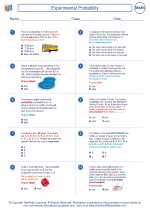Percentiles
Percentiles are a way to understand and interpret data by dividing a set of values into 100 equal parts. Percentiles are often used in statistics and data analysis to understand the distribution of a dataset and identify specific points within that distribution.
Calculating Percentiles
To calculate a percentile, you first need to arrange the data in ascending order. Then, you can use the following formula to find the percentile value:
Percentile = (P/100) * (n + 1)
Where P is the desired percentile (e.g., 25th percentile), and n is the total number of values in the dataset.
Interpreting Percentiles
Once you have calculated the percentile, you can interpret it as the value below which a certain percentage of the data falls. For example, the 25th percentile represents the value below which 25% of the data falls.
Uses of Percentiles
Percentiles are useful for comparing individual values to the overall distribution of a dataset. They can also help identify outliers and understand the spread of data values. In addition, percentiles are commonly used in healthcare to assess growth and development in children.
Study Guide
- Understand the concept of percentiles and how they divide a dataset into 100 equal parts.
- Learn the formula for calculating percentiles using the position of the desired percentile in the dataset.
- Practice arranging data in ascending order and calculating percentiles for different datasets.
- Interpret percentiles as the values below which a certain percentage of the data falls.
- Explore real-world applications of percentiles, such as in healthcare and data analysis.
By mastering the concept of percentiles and practicing their calculation and interpretation, you can gain a deeper understanding of data distribution and make informed decisions based on statistical analysis.
.◂Math Worksheets and Study Guides Eighth Grade. Experimental Probability

 Worksheet/Answer key
Worksheet/Answer key
 Worksheet/Answer key
Worksheet/Answer key
 Worksheet/Answer key
Worksheet/Answer key
